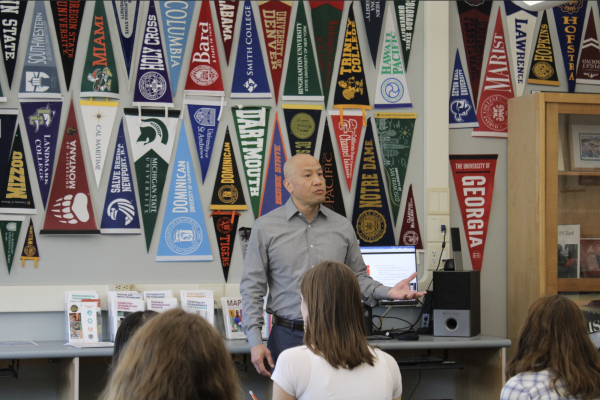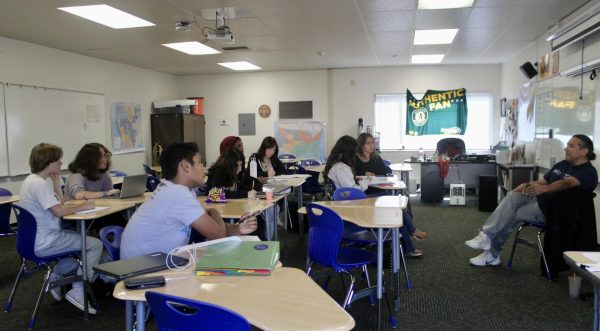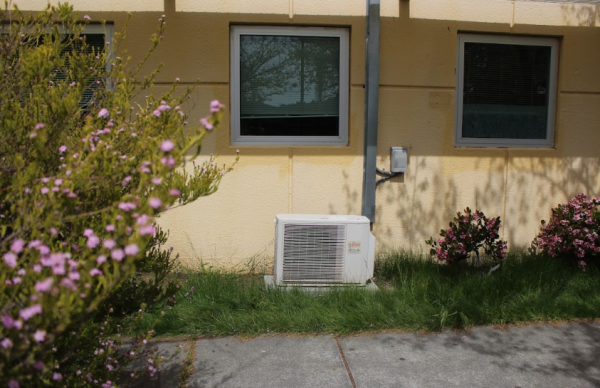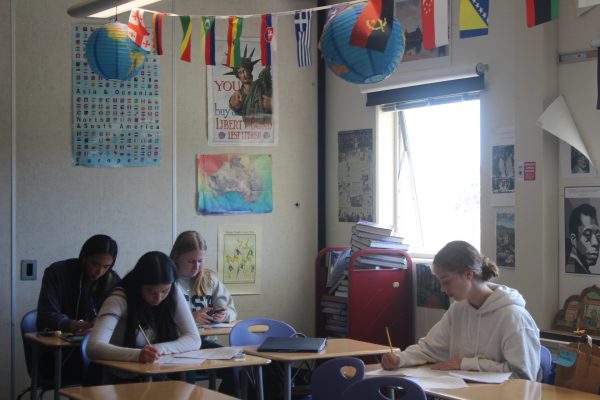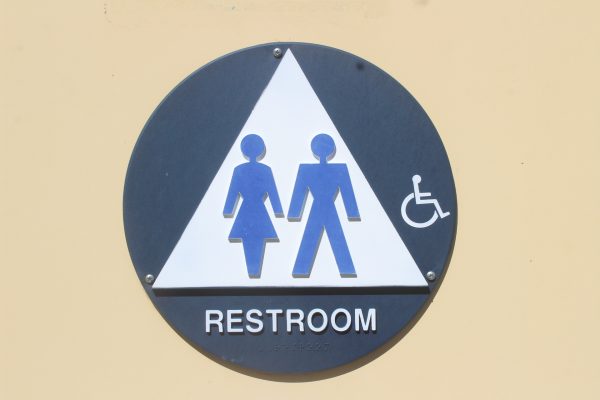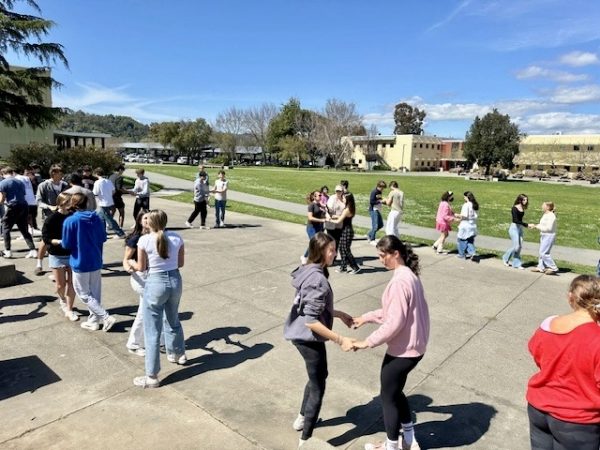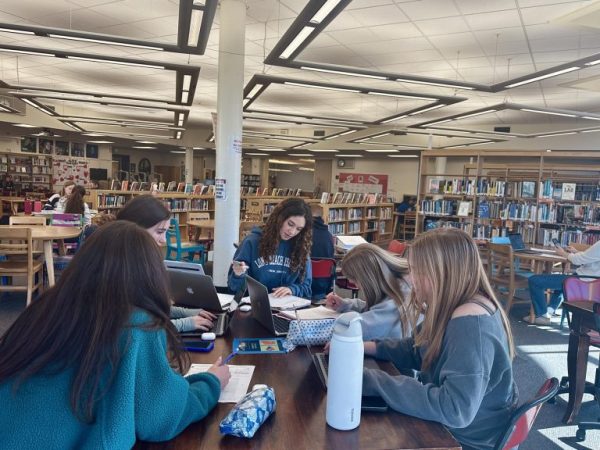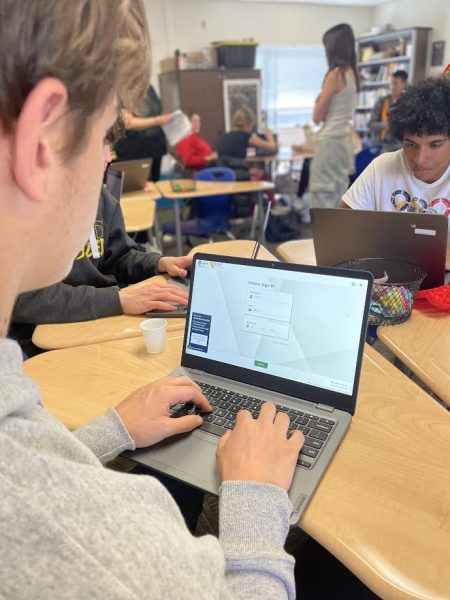San Rafael emergency homeless shelter provides seasonal relief
December 16, 2022
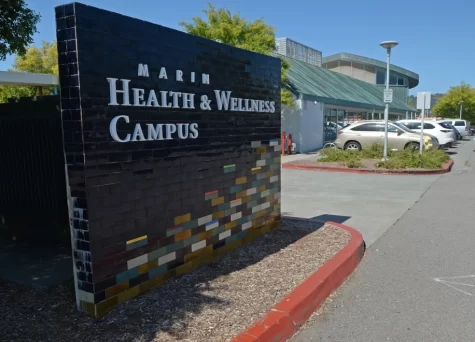
For many, the holiday season is a time filled with festivities, family, joy and a much-needed break from school and work. However, for those experiencing homelessness, the holidays do not offer that same feeling of relief and elation. With the winter season approaching, increasingly colder temperatures continue to exacerbate the struggles homeless individuals face, amplifying the need for more shelters.
Trying to mitigate this problem, the Marin County Department of Health and Human Services (Marin HHS) and Episcopal Community Services implemented an emergency shelter in San Rafael. The new shelter, located on 3240 Kerner Blvd. at the Marin Health and Wellness Campus, opened on Dec. 13 and was initially planned to end on Dec. 14. However, in response to the National Weather Service’s prediction of several days of sub-freezing temperatures, the shelter has been extended through Dec. 18, available to any unhoused person in need of a safe, warm place to stay.
Winter is one of the deadliest times of the year for people experiencing displacement. According to the National Coalition of Homelessness, at least 700 people in the U.S. are killed every year by hypothermia as they lack access to suitable housing.
While these shelters provide emergency relief, Carrie Sager, who has worked as senior homelessness coordinator with the Marin HHS for the past six years, provides insight into their downsides.
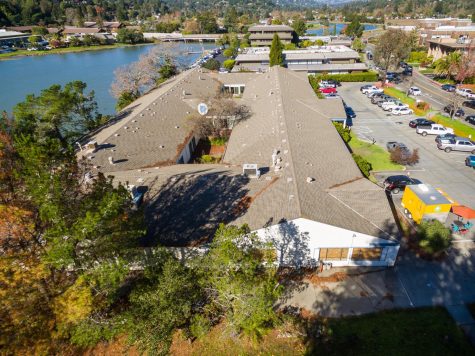
“When the county invests more in shelters, that means there is less money being invested into permanent housing solutions and supportive services,” Sager said. “I want to end homelessness, and I don’t think that’s an unreasonable pipe dream.”
Through programs including Project Homekey and Homeward Bound of Marin, initiatives have tried to establish more permanent affordable housing solutions, not just temporary ones.
These solutions, however, are not universally supported. Gary Naja-Riese, director for the division of homelessness at Marin HHS, elaborates on the challenges he faces when trying to get support from surrounding communities.
“One of the biggest challenges [with passing a more affordable housing legislature] is people’s attitudes towards [those who are] unhoused. There is a stigma which prevents [unhoused] people from getting access to the things they need. The general public is more concerned about not seeing homelessness than solving it,” Naja-Riese said.
According to Housing First, in Marin, the number of unsheltered individuals experiencing homelessness has increased by 17.2 percent from 2019 to 2022. For housing activist and senior Poppy Lasher, this reality is extremely frustrating.
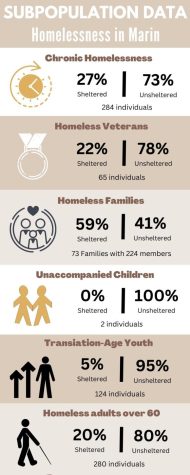
“I have seen first-hand what lack of housing in Marin can do to families and it’s really impactful. It’s so frustrating because we as a county have plenty of resources. When it comes to homelessness, the people — [those] who can really do something about it — have this ‘not in my backyard’ attitude. They don’t want to see homeless people. Many want to live in this kind of Utopia,” Lasher said.
In the spirit of the holiday season, Naja-Riese urges people to find more empathy within themselves. He highlights the importance of putting oneself in another person’s shoes.
“Try to imagine waking up in the morning, and doing all the things that you normally do now. Now imagine doing that outside, in a field, next to a bridge, or under a doorway. How do you do that? What can and can’t you do? When people can look at it that way people can look to see what it could be like,” Naja-Riese said.
Sager also believes starting from a point of empathy and humility is the key to obtaining more support for housing. With more support, more displaced individuals can find homes and support services. By viewing topics like homelessness through a lens of empathy, people are able to unite and come together. According to Naja-Riese, the compassionate approach seems to be working.
“We are very close to ending veterans homelessness in Marin which we think we can accomplish by 2024. We also are projected to reduce chronic homelessness by half in 2024, and are currently working on trying to get more and more homeless families off the streets with various programs and support facilities,” Naja-Riese said. “If we sustain that level of energy and intention over the next five years we will see a very different Marin.”









